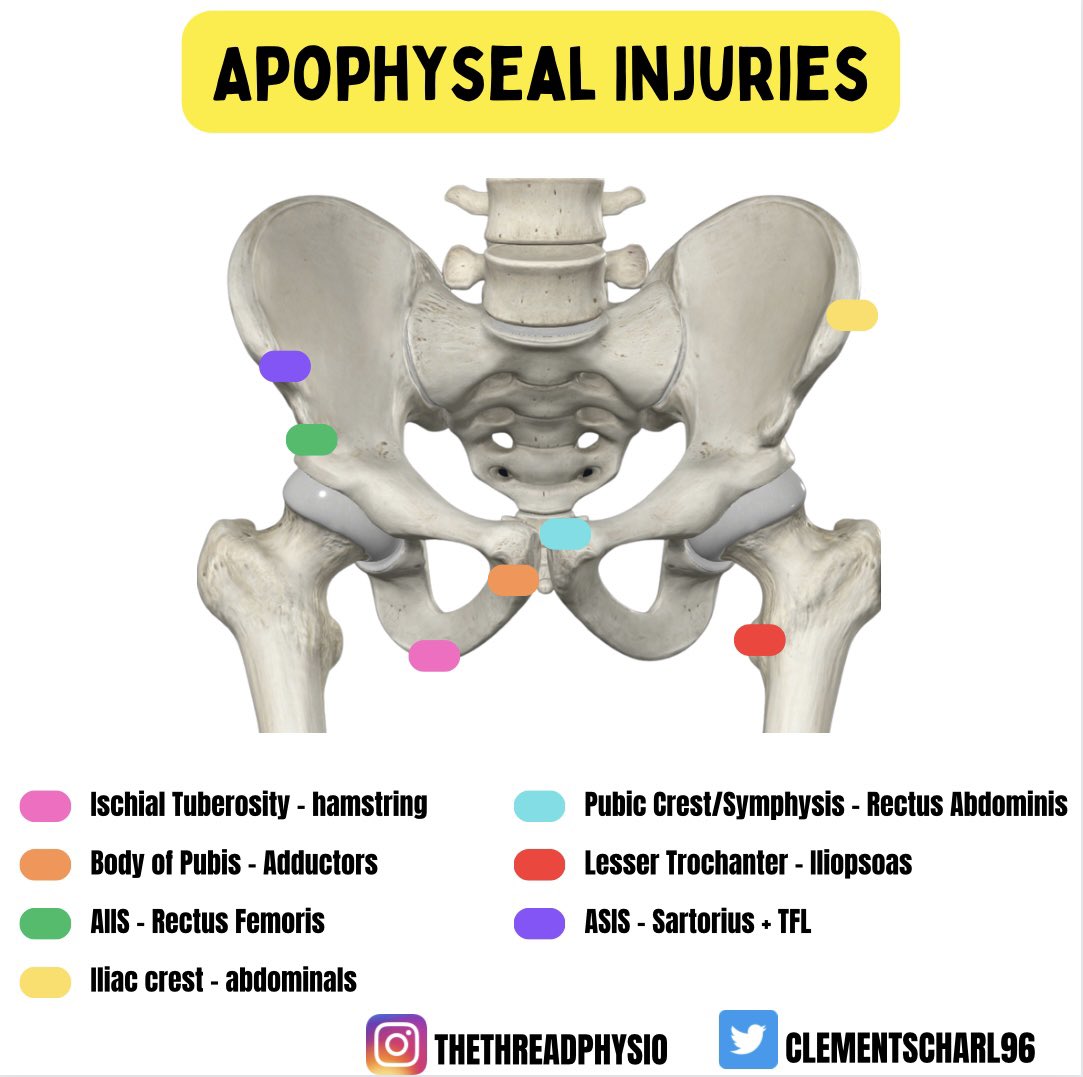1) A short 🧵 looking at median nerve palsy (MNP) and some useful tips to help differentiate the site of its lesion.
2) In terms of its anatomy. It is composed of two sections, the lateral cord (C5-7) which innervates proximal muscles and provides sensory innervation to thenar eminence and the radial 3.5 digits. The medial cord (C8-T1) is purely motor.
3) 1st if we start with the carpal tunnel (CT) which accounts for most MNP’s. An easy way to determine whether the lesion is proximal, is if the pt is c/o paraesthesia in the thenar eminence as this is innervated by the palmar cutaneous branch found 2 inches proximal to wrist. 

4) Useful clues to help determine CT vs C5/6 radiculopathy would be; a) +’ve flick sign, +’ve phalens & tinels, often nocturnal paraesthesia and wrist flexion + triceps would be normal!
5) If there has been a lesion proximal to the elbow (e.g supracondylar #) we will lose all MN innervation. Easiest way to spot this is that the forearm will be supinated with an inability to pronate due to denervation of pronator teres & quadratus. 

6) If we have an anterior interosseous lesion (albeit rare) this will only affect the medial cord and therefore we are presented with motor deficits. Inability / weakness with pincer grip / performing an OK sign is an easy way to assess FPL and IF flexors. 

7) Another sign of AIN is the Hand of Benediction. We will see natural flexion of our ulnar sided digits. Whereas denervation of FPL, FDS and FDP will mean the thumb, IF & MF rest in an extended position. 

8) Finally, with more chronic issues, denervation of the APB will mean the hand appears more flattened as the thumb will naturally lie in a more adducted position. 

• • •
Missing some Tweet in this thread? You can try to
force a refresh

















